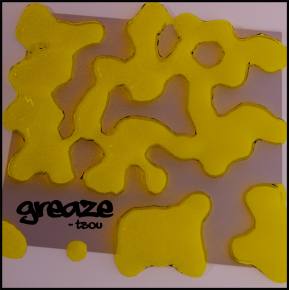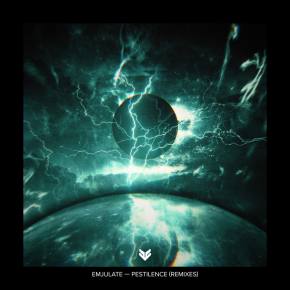By: Baxtak
 Following a phenomenal year, which saw him rise in the ranks of all things slimepunk, halftime, and neuro, Chee returned in late 2017 with Eddy Morphine; an EP released on Noisia’s Division imprint. The release further cements his exponential growth into an instantly recognizable artist, and one of the most sought after producers on the face of the planet. Accordingly, in this article, we’ll be delving into a critique of his recent release and overall artistic journey.
Following a phenomenal year, which saw him rise in the ranks of all things slimepunk, halftime, and neuro, Chee returned in late 2017 with Eddy Morphine; an EP released on Noisia’s Division imprint. The release further cements his exponential growth into an instantly recognizable artist, and one of the most sought after producers on the face of the planet. Accordingly, in this article, we’ll be delving into a critique of his recent release and overall artistic journey.
So, let’s start with setting the scene of the lead-up to this new release. Earlier in 2017, Chee released his Fear Monger LP through Saturate! Records, unleashing a highly erratic and intensely charged take on dark experimental bass music, while also striking the perfect balance with danceability. A number of stellar singles and compilation features followed up the album, and Chee’s sound was overwhelmingly revered across the scene, with features on The Untz, Red Bull Studios, UKF, The Dub Rebellion, Noisia Radio, and Terminal, guest mixes for Nest HQ and Methlab, remixes from G Jones and many others, a full-fledged UStour, and a sea of other supporters all across the mainstream and underground, including people like Moody Good, The Glitch Mob, Tsuruda, NastyNasty, Ivy Lab, Culprate, Bare Noize, Bleep Bloop, Bassnectar, … the legendary list goes on.
The Eddy Morphine EP mainly revolves around the theme of halftime bass music, with a considerably less savage outlook than Fear Monger, thus, exploring a slightly more graceful approach. Chee mentions in his interview with UKF that the EP is “more melodic and takes you on a journey” and this fits with his regularly mentioned narrative in interviews that this style perfectly balances his love for J Dilla, Swizz Beats, and Mr Carmack type beats and the more experimental Amon Tobin, Richard Devine, and Squarepusher side of the spectrum, which in my opinion brings it to a vibe, most closely shared with artists like Thriftworks and Kursa. Having covered most of what is already known about Chee’s music, let’s dive into a track-by-track commentary on Eddy Morphine and put the release under the proverbial microscope.
Starting from the aptly titled, “Allergic To Public Displays of Affection,” Chee immediately sets a dreamy tone with glittery arps and intricately heavy drums and sound design, sounding like Dilla transmissions from beyond the heavens, before descending into creepy higher-pitched female love bites and other friendly sounds which signal an immediately friendlier release than his previous work this year.
Ironically, the title track “Eddy Morphine” shatters all those hopes, jumping into heavier and significantly more psychedelic realms that are unmistakably Chee-induced; intricate x-y and low-to-high panning, crispy engineering, and a sense of limping syncopation which resembles a laser beam ricocheting off an asteroid belt in an intergalactic drive-by assassination. As evident in “Medallion” and “Off It All,” one striking feature of Chee’s heavier beats is that while the songs are wandering far off in the abstract corridors of an [experi]mental ward, they still inherit an urban quality, clearly maintaining a genuine hood aesthetic and groove to be considered hip-hop instrumentals. Meanwhile, the question of “who can step up to murking up a beat like this?” remains unanswered.
 Moving on, yet feeling like being stuck in cyber purgatory, “Pedigrief” does as much possible to give you existential anxiety as it does in making you dance; this way, you can conveniently justify your facially expressed corporeal woes as bass-gurn-faces and blend amongst a sea of dancing cadets. “Swollen” also acts as another recipe of the same elements, with varying levels of ominous, inquisitive, soulful, rabid and playful elements interacting over the course of the song’s chronos.
Moving on, yet feeling like being stuck in cyber purgatory, “Pedigrief” does as much possible to give you existential anxiety as it does in making you dance; this way, you can conveniently justify your facially expressed corporeal woes as bass-gurn-faces and blend amongst a sea of dancing cadets. “Swollen” also acts as another recipe of the same elements, with varying levels of ominous, inquisitive, soulful, rabid and playful elements interacting over the course of the song’s chronos.
“Psychologistics” is a hard-hitting audio-brawl, in similar vein to Chee’s other Near East-inspired tunes like “Haze,” and “Walking Dread” from his It Hz side project with Jon Casey, and in many ways, it does carry out the sort of sorrow and aggression that one would expect from the current climate of this regional influence. Finally, “Crævin’” is another absurdly stumbling groove, sounding like a group of beatboxers jamming to the sound of themselves falling down a long set of irregularly-sized stairs.
A strong indicator of creativity in music is a piece’s ability to allow the listener to conjure up otherwise unperceivable visualisations and concepts, and as it may have already become evident in this article, Chee’s music is almost synesthetic. Just trying to conceive the mixing of all elements in the songs illustrates a scene of what happens when a pair of copulating octopi become tentangled atop a 16-track mixing deck, nudging the individual channels up and down in a rampant aquatic ritual dance with grooves that are not commonly known to humans. Mix in the melodic compositions, soundbites, song-titles, artist background, and your own imagination, and you got yourself an Oscars level of heavy electronic music to watch through your ears.
Stay stoked and see what 2018 Chee brings for the masses; we just hope that it contains his cross-genre experimentations (including breakcore) that the world hasn’t been ready for yet.
Tags: Drum and BassHip Hop

















